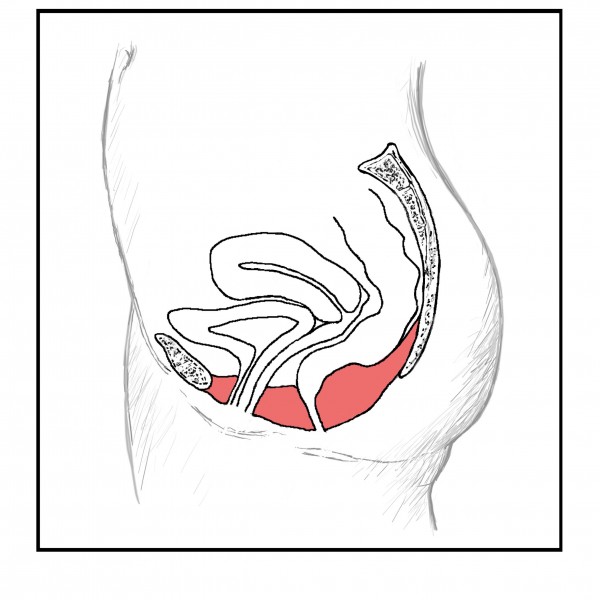By Maeve Whelan, Specialist Chartered Physiotherapist
The pelvic floor muscles are a sling of muscles attached from the pubic bone at the front to around the rectum at the back. In pregnancy as the weight of the baby increases the pressure on the bladder increases and you may be more prone to urinary leakage. Exercising the muscles both during pregnancy and after birth has been shown to have beneficial effects in prevention and treatment of urinary and bowel symptoms.
After delivery the pelvic floor will have sustained some trauma through childbirth so having exercised before childbirth will mean that it is easier to regain strength afterwards.
How to do your Pelvic Floor Exercises
- Make sure the pelvic floor and abdomen are completely soft before you start
- Breathe (sigh) all the way out emptying your lungs
- Slowly and gently draw in your back passage upwards and forwards towards your bladder or pubic bone
- Hold this for 5 seconds and then release it – completely, backwards towards the coccyx
- Repeat this 10 times
- Once you can hold for 5 seconds you can then start trying to increase to 10 seconds and keep breathing while you hold.
- Do 10 fast contractions holding and then releasing completely. Repeat 10 times.
- Do your pelvic floor exercises 3 times per day.
NB always release completely after each rep. Think of the lift, if you have gone to the 6th floor then always release to the basement afterwards!
How to do the Release
The pelvic floor also needs to be mobile to ensure that it is as well prepared as it might be for labour and delivery. It is important that we don’t assume that the pelvic floor needs to be strengthened only but that there is also focus on the release as tension problems can actually make it harder to strengthen the pelvic floor.
Spend more time focusing on the release to the basement in your pelvic floor exercises if you suspect that your pelvic floor is quite tight or tense.
- To release the pelvic floor lie in your back or on your side and put your hands on your upper tummy. Breathe in through your nose and fill up your upper tummy softly and gently into your hands and at the same time relax or release your pelvic floor muscles backwards in the direction of your coccyx, the direction of the release of the muscle fibres.
- Stay on this soft in breath for 3 seconds and then exhale with a soft ‘hah’ sound – the entire release of the pelvic floor should be on the in-breath, it should be effortless with no pushing or forcing outwards.
NB Perineal massage may be helpful with assisting pelvic floor release in advance of labour and delivery and can be started from 34 weeks. Contact a Chartered Physiotherapist in Women’s Health to help you with these Pelvic Floor Manual Therapy techniques.
Think of keeping a diary of your pelvic floor exercises or using one of the phone Aps e.g. Squeezy to remember.




